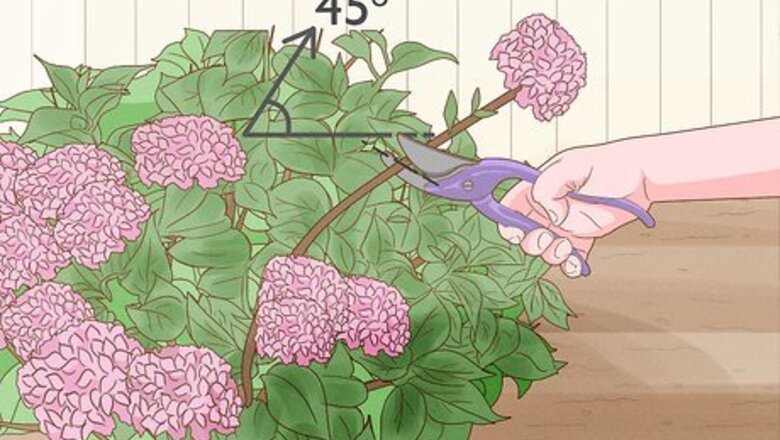
views
- Fully submerge your hydrangeas in water or place the stems in hot water to perk up droopy blooms.
- Delay wilting by dipping hydrangea stems in alum, sticking them in your refrigerator, or adding a floral preservative to your vase of water.
- Improve water uptake by cutting stems at an angle, removing leaves, and misting your flowers daily.
Cut hydrangea stems at a diagonal angle.
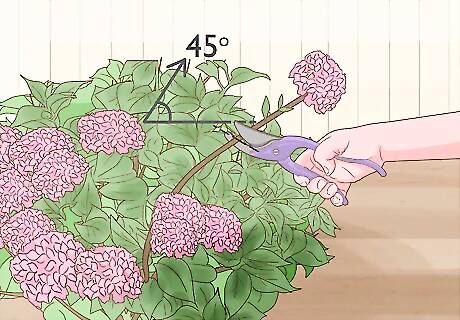
Hydrangeas need fresh cut stems to soak up water. Cutting the hydrangea’s stem on a slant gives them stem more surface area to drink up water. With a sharp knife or pruning shears, remove about 1 inch (2 cm) off the bottom of the stem at a 45 degree angle. Further improve your hydrangeas water uptake by scraping about 1 to 1 ½ inches (2-4 cm) up the stem with a knife. Hydrangeas get their name for their love of water. In Greek, “hydor” means water and “aggeion” means vessel, which when combined refers to the hydrangea’s need for water and its vessel shaped seeds.
Submerge wilting hydrangeas in water.
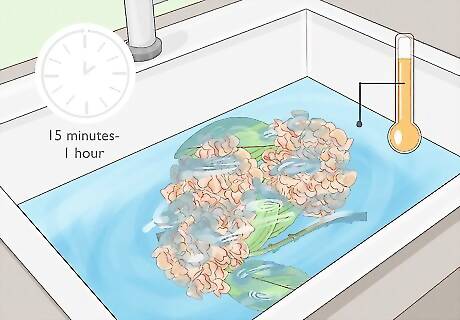
Soak your hydrangeas in water to rehydrate the stems and petals. First, cut each stem at an angle if you haven't already, then fill your sink with lukewarm water. Gently place your flowers in the water and let them soak for 15 minutes to 1 hour. You will see them perk back up to their lush fullness! Set a plate over the hydrangea stems to help them sink. If your flowers still look wilted after an, let them soak in the water overnight. Any flowers that are still wilted the next day can’t be revived, so it might be time for a beautiful, new bouquet.
Place hydrangea stems in hot water.
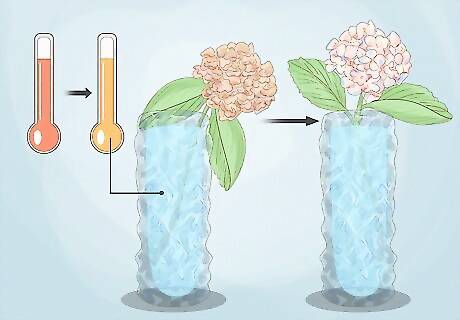
Use boiling water to remove sap that prevents water uptake. First, boil a pot of water and let it cool slightly before pouring it into a shatter proof, heatsafe vase. Then, gather the hydrangeas (and cut their stems at an angle if you haven't yet). Next, arrange them in the vase of hot water. Sit back and watch as the blooms open back up! To help the hydrangeas soak up even more water, slice a vertical slit about 1 inch (2 cm) long up each stem.
Dip the stems in alum.
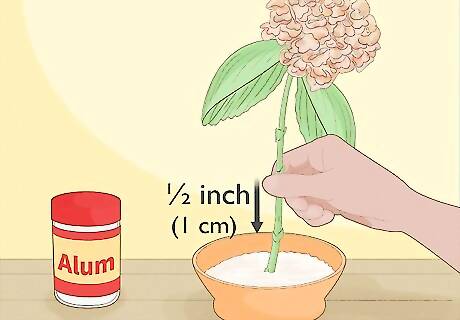
Alum can protect the bottom of your stems from sap build up. Alum is a common cooking spice that doubles to preserve your hydrangeas. After cutting your stems, add several spoonfuls of alum to a bowl and dip each stem about ½ inch (1 cm) deep into the powder. Simply place your flowers in a vase full of fresh water and watch as they continue to thrive.
Preserve hydrangeas in your refrigerator.
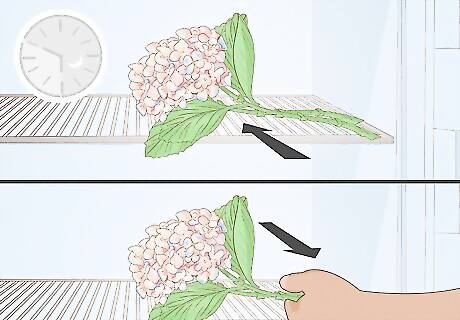
The cold air in your refrigerator can perk up drooping flowers. After you’ve revived wilting hydrangeas by soaking them or placing the stems in hot water, simply stick them in your fridge for a few hours to keep their blooms full and lush. Before your hydrangeas even start to wilt, place them in your refrigerator before you go to bed and simply remove them in the morning. Florists actually use this trick to help flowers last longer and to prevent droopiness.
Smash the bottom of your hydrangea stems.
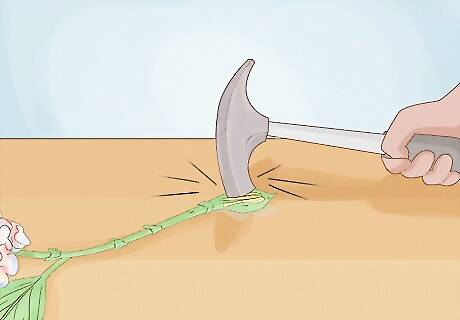
Use a hammer to crush your stems and improve water absorption. Some experts swear that smashing the bottom of your stems makes hydrangeas soak up water better. However, others argue this actually stops hydrangeas from soaking up water. So, try this tip out with one bouquet, and if it doesn’t work, stick to other reliable methods in the future.
Replenish your vase with fresh water every day.

Hydrangeas need fresh, clean water to stay beautiful and full. Remove your flowers from your vase and cut the bottoms off of any unhealthy stems. Healthy stems should look opaque and white inside while unhealthy stems might appear brown or have a clear, sticky sap covering them. Pour out the old water from your vase and refill it with lukewarm water.
Choose mature blooms to make your hydrangeas last longer.
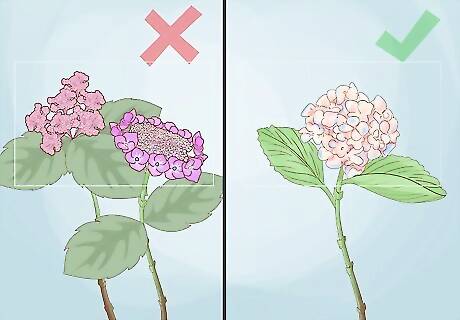
Hydrangeas that are bright and in full bloom wilt less quickly. If you have your own hydrangea bush or are shopping for bouquets, inspect each flowers’ petals. Immature flowers will still have their flowers slightly closed while mature hydrangeas’ flowers are fully open and deep in color. Be careful about picking immature blooms because they wilt very quickly.
Mist your hydrangeas every day.
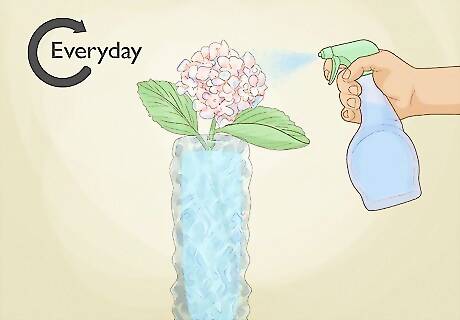
Spraying flower's petals regularly is a great way to delay wilting. While hydrangeas soak up a lot of water through their stem, they actually absorb more water through their petals. To keep them hydrated, add water to a spray bottle with a gentle mist. Be sure to spritz each flower so that they are lightly covered in dew
Add a floral preservative into the water.
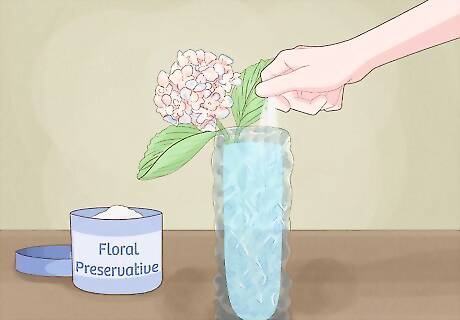
Preservatives keep bacteria at bay, making flowers look better for longer. Adding a floral preservative into your vase of water is an easy way to keep your hydrangeas happy and healthy for a longer period of time. Preservatives provide food for your flowers and contain ingredients that promote water uptake and balances water pH. Follow the preservative’s directions to ensure you are adding the correct amount of preservative into the water.
Remove leaves from the bottom of the stems.
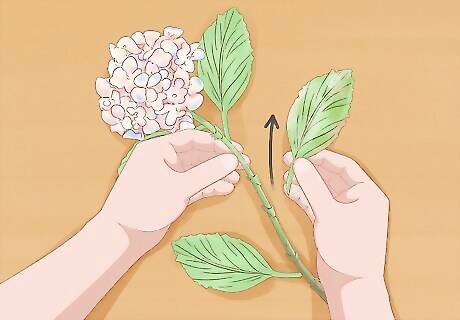
Molding leaves prevent your hydrangeas from absorbing water. Before placing your hydrangeas in a vase, snip off any leaves that will be submerged in the water. These leaves will rot and siphon water from the stem and blooms to try to get healthy. Do keep the top leaves intact because they can help the stems absorb water and act as a beautiful frame for your flowers.
Act quickly to revive your hydrangeas.
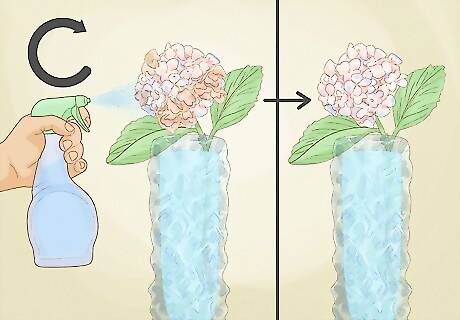
Rehydrate your hydrangeas as soon as you see them start to droop. However, don’t be discouraged if your flowers continue to wilt even after trying these methods. Some hydrangeas won’t revive because they are too old or wilted. Simply enjoy your hydrangeas while they are fresh and beautiful!

















Comments
0 comment